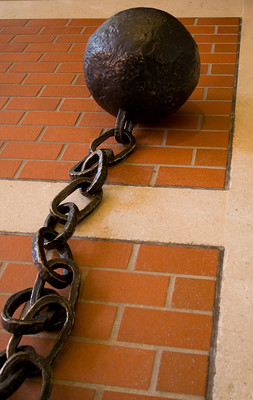Earlier this week, I wrote about free community college options, given that universal tuition is no longer a thing. Graduating without educational debt should be every student’s goal. Right now, the average community college student loan debt is $11,321. That represents the average debt for all students at all community colleges in the US.
The average student loan debt for a Washtenaw Community College student is $13,091. WCC borrowers pay a 15.6% premium to attend a community college with the second-lowest attendance cost in Michigan. So that raises a few questions.
First, if the cost of tuition at WCC is $105 per credit hour ($95 plus a $10-per-credit-hour fee), the cost of a WCC degree is $6,300. That assumes a 60 credit hour program. The average student loan debt for a WCC student is more than twice the cost of a WCC degree. Books and course fees might account for some of that, but students are clearly borrowing to cover living expenses.
The above-average student loan debt from a school with a below-average cost of attendance should be a bright, flashing indicator to at least someone in Second Floorland that WCC should find a way to apply more of Washtenaw County’s generous property tax support to scholarships. (Maybe not have so many Vice Presidents on the payroll?)
The other thing to point out here is that most WCC students don’t get degrees; they get certificates. A certificate program could be one-quarter the number of credits as a degree. In theory, fewer credits should cost less overall, right? So how is it that a school with more students enrolled in certificate programs produces an above-average student loan debt?
Student loan debt isn’t getting repaid
Third, the Department of Education tracks the student loan repayment rate per institution. According to them, 24% of WCC students are in forbearance, meaning that they’re not yet required to make student loan payments. They’re either still in school, or they’ve just recently graduated. (Actually, virtually all student loans are in forbearance until May 1 due to COVID-19.) But prior to the pandemic, 24% were not yet required to make payments.
An equal number of WCC students with federal student loans were “not making progress.” The US Dept of Ed defines this as borrowers who are making regular payments, but the balance due on their loans exceeds the original loan amounts. In other words, they’re not making payments big enough to reduce their student loan debts.
Think about that for a minute. These are the borrowers who left school without a degree but with student loan debt. Alternately, they are not sufficiently employed following graduation to pay their student loan debts. Neither possibility there is good. In fact, it reflects poorly on one of the best-funded community colleges in the State of Michigan.
After the Not Making Progress group, there’s the defaulters. These are borrowers who no longer (or never did) make payments on their student loans. 15% of WCC’s borrowers are in default. Another 15% have a deferment. These borrowers have temporarily stopped their repayment requirement, but their loans are still outstanding. 5% of WCC’s student loan borrowers are delinquent. They’re somewhere between 30 and 360 days behind on their student loan payments.
Rich community, poor graduates
So, 83% of WCC’s borrowers are in forbearance, in deferment, making insufficient payments, in default or delinquent on their student loan debts. Just thirteen percent of WCC borrowers are making progress on their loan debt. The remaining 4% have either paid off their loans or had them discharged.
(And remember, we’re in a rich community.)
This is an insanely good reason to eliminate academic programs that do not open up living-wage employment opportunities. Period. It’s also an equally good reason to restrict certificate programs to students who already have a post-secondary degree. A certificate should be an enhancement to a degree, not an educational end in and of itself.
It is reckless to allow students to borrow heavily against their future when the risk of not graduating or not achieving gainful employment with a WCC degree is alarmingly high.
When 83% of your borrowers are not able to make payments on their above-average student loan debts, what do you call someone who went to WCC?
Photo Credit: Fred Dawson , via Flickr


















